Abstract
A new system of patient protection from bacterial crossinfection called the Bacteria Controlled Nursing Unit (BCNU) is described, based on strict environmental control of a 6 x 10 foot area surrounding the patient's bed rather than the entire patient room or isolation ward, plus the ability to deliver all medical care without entering the protective environment and maintaining all monitoring, life support, and i.v. equipment outside the controlled environment. The clinical effectiveness of this system in the treatment of burn patients has been studied and compared with the effectiveness of single room isolation on a burn isolation ward and conventional isolation techniques on an open burn ward. The studies show that the BCNU is significantly more effective in preventing bacterial cross-contamination than conventional precautions (3.8% vs. 13.1%, P < 0.001; and 8% vs. 22.8%, P < 0.001) over a two and four week period. The studies also indicate that there was a significant increase in the probability of infection occurring following cross-contamination than occurring after auto-contamination (65% vs. 39%, P < 0.005), emphasizing the importance of preventing cross-contamination in reducing the overall infection rate in seriously burned patients. Clinical evaluation of the unit proved it to be compatible with intensive nursing and medical care without increasing the nurse to patient ratio. The unit provided sufficient control of bacterial cross-infection to allow reduction in mortality and improvement in the effectiveness of burn care through routine prompt excision of burn eschar and immediate wound closure to be carried out in severe and massively burned patients without a limiting threat of bacterial burn wound sepsis.
Full text
PDF
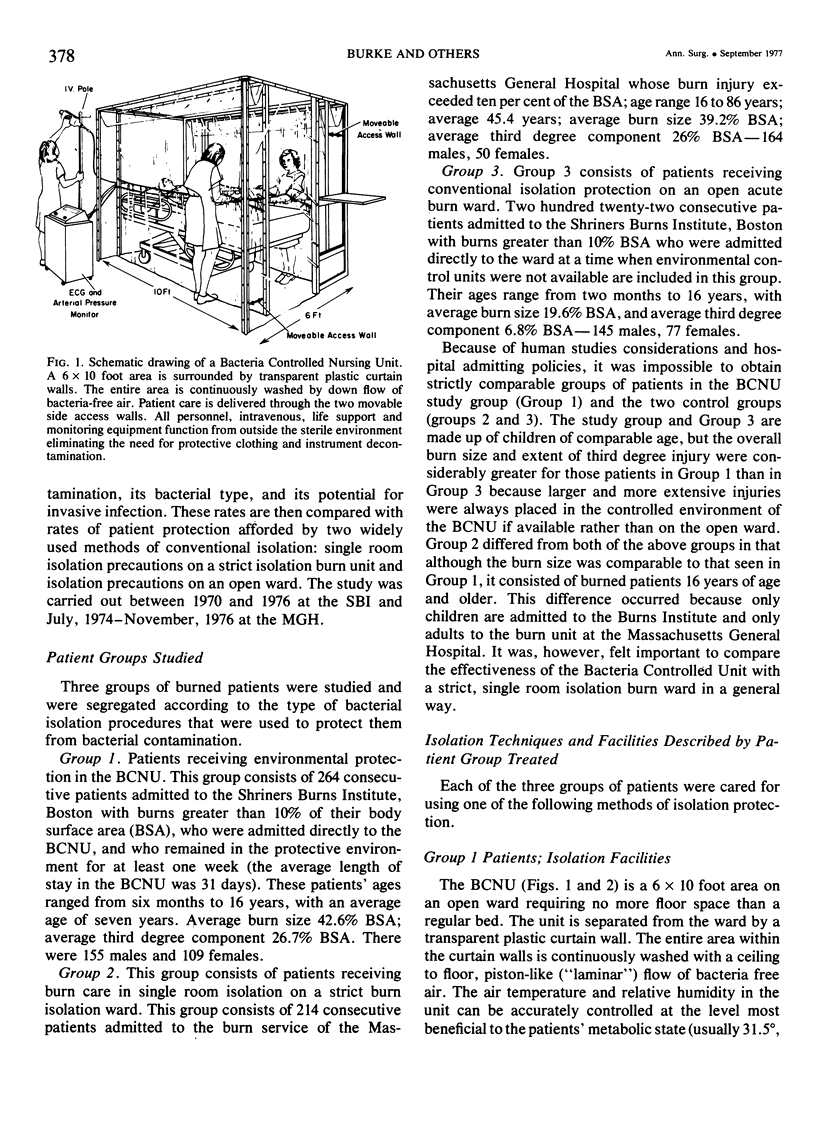
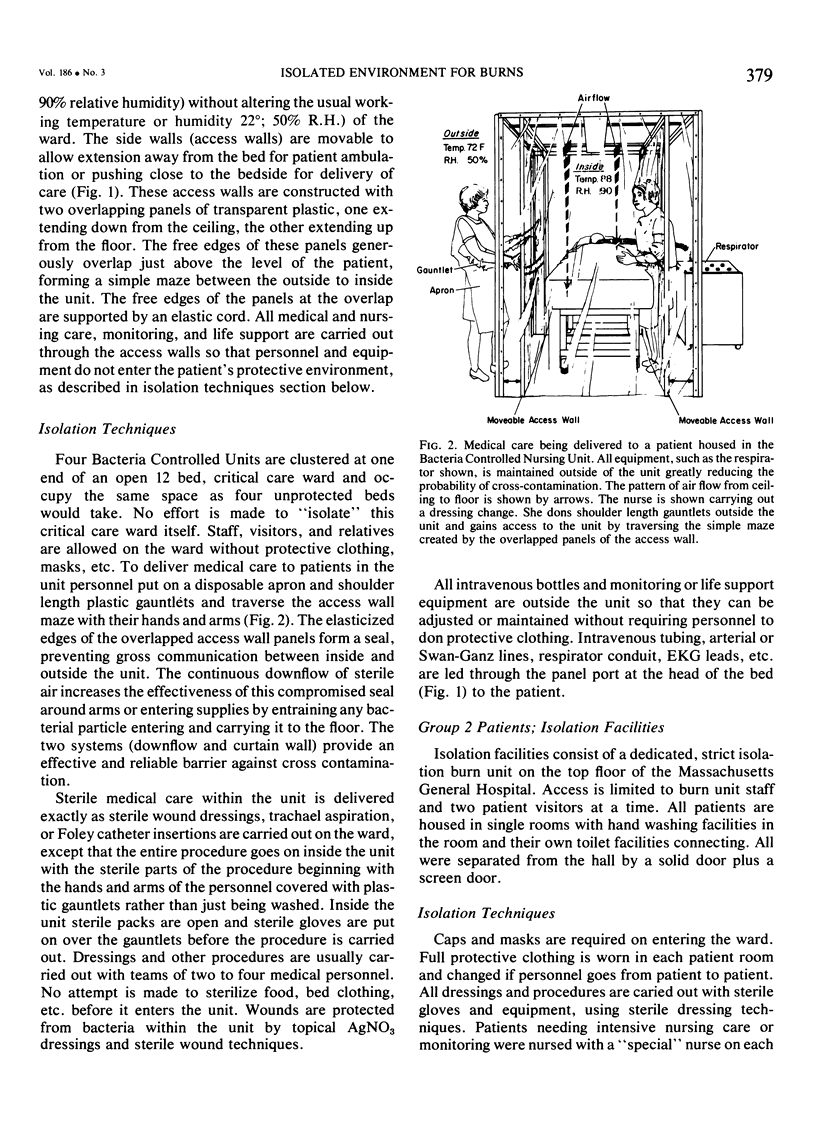

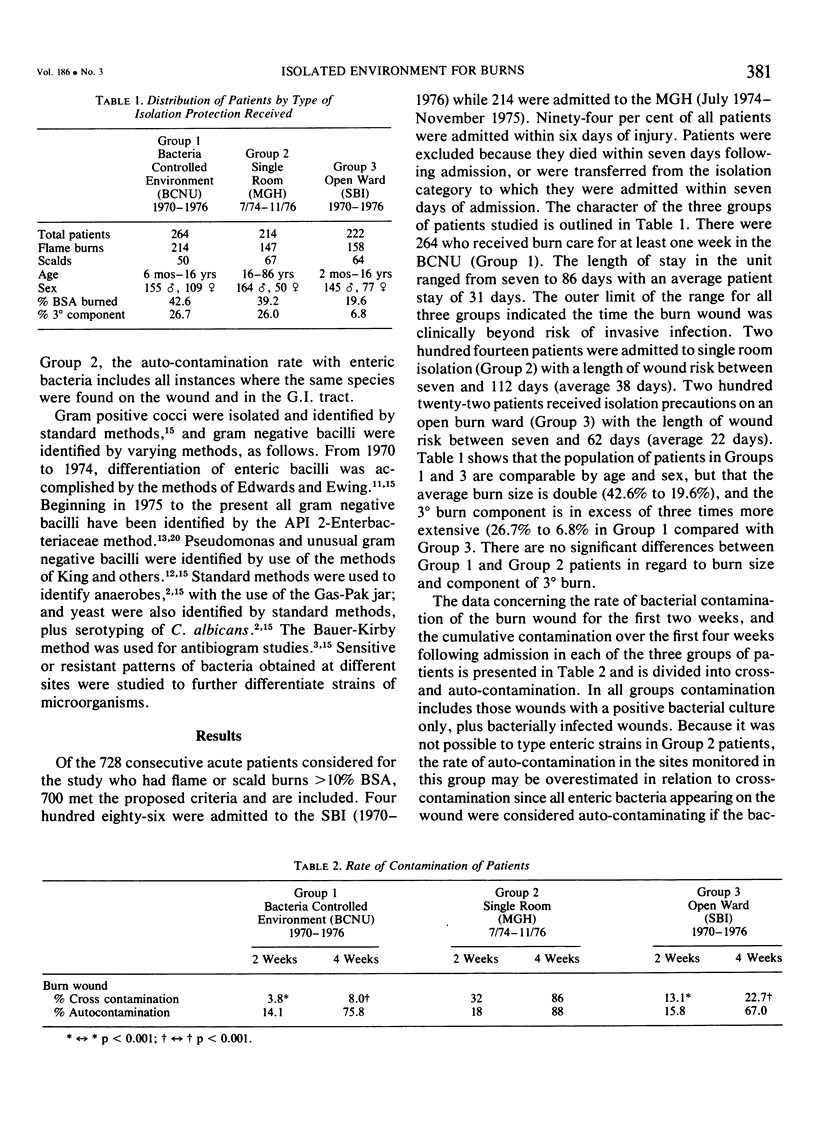
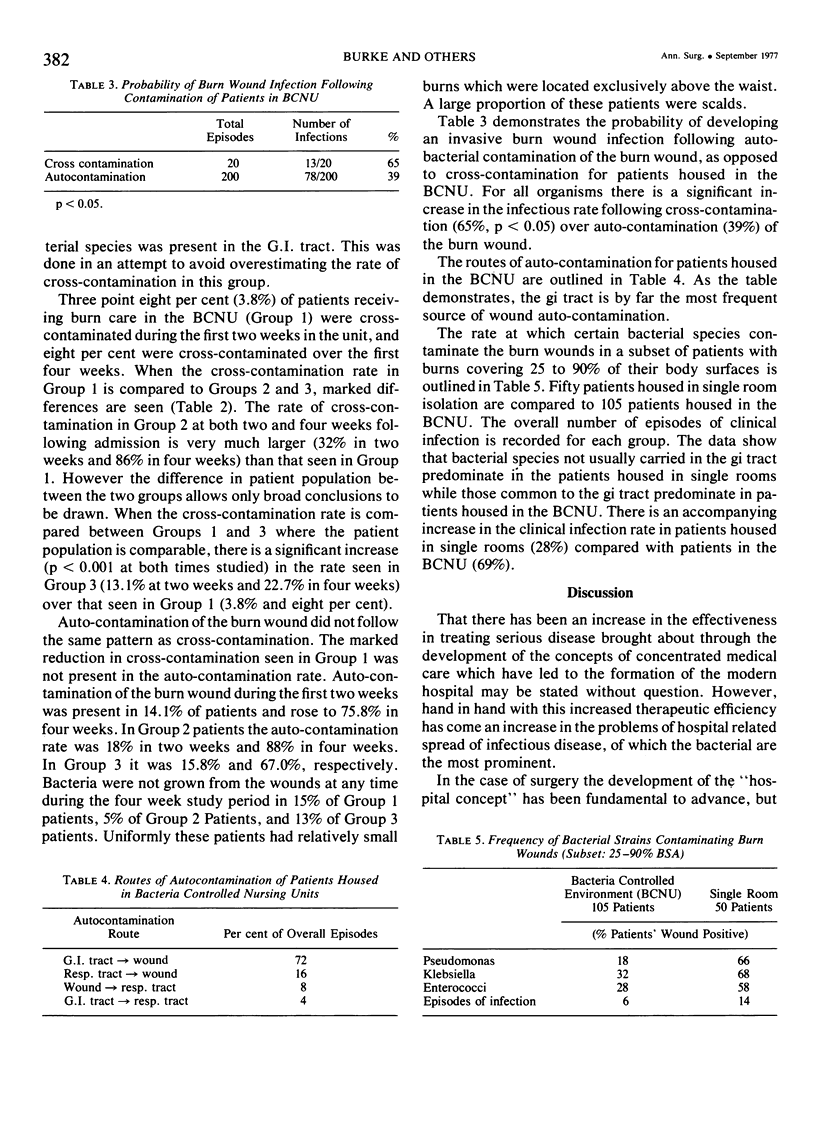
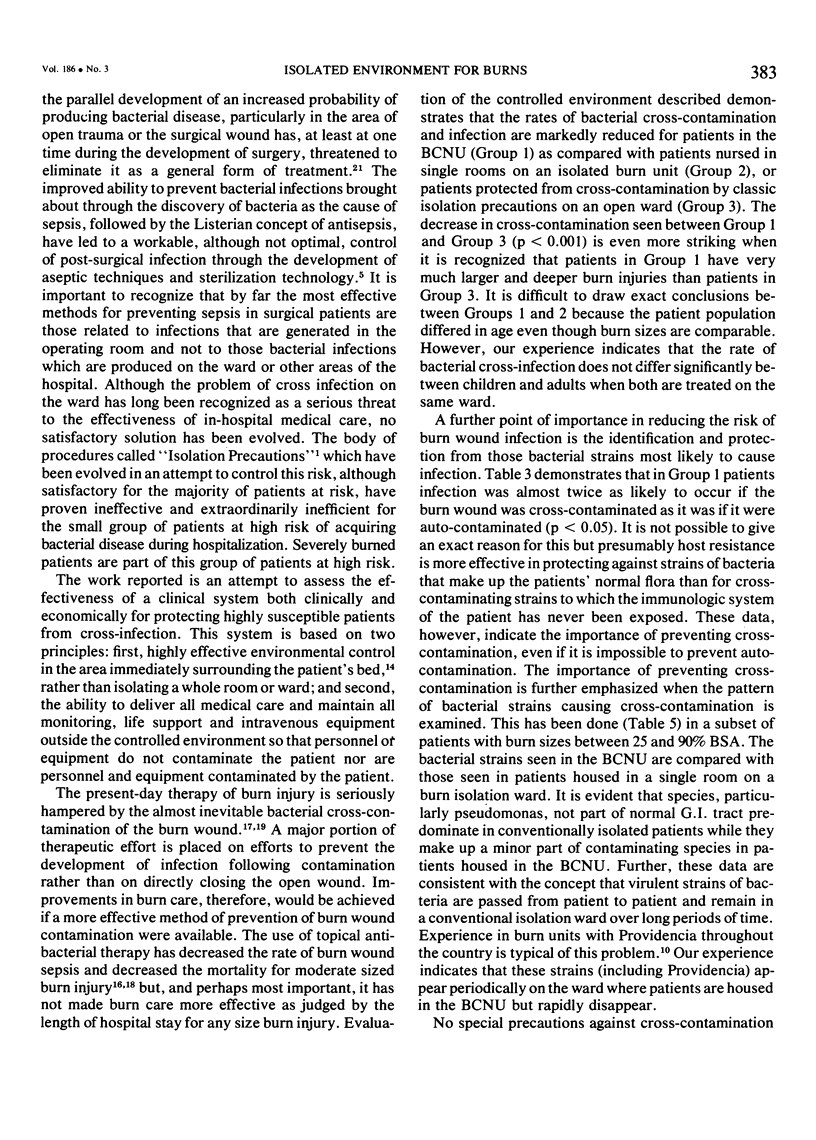
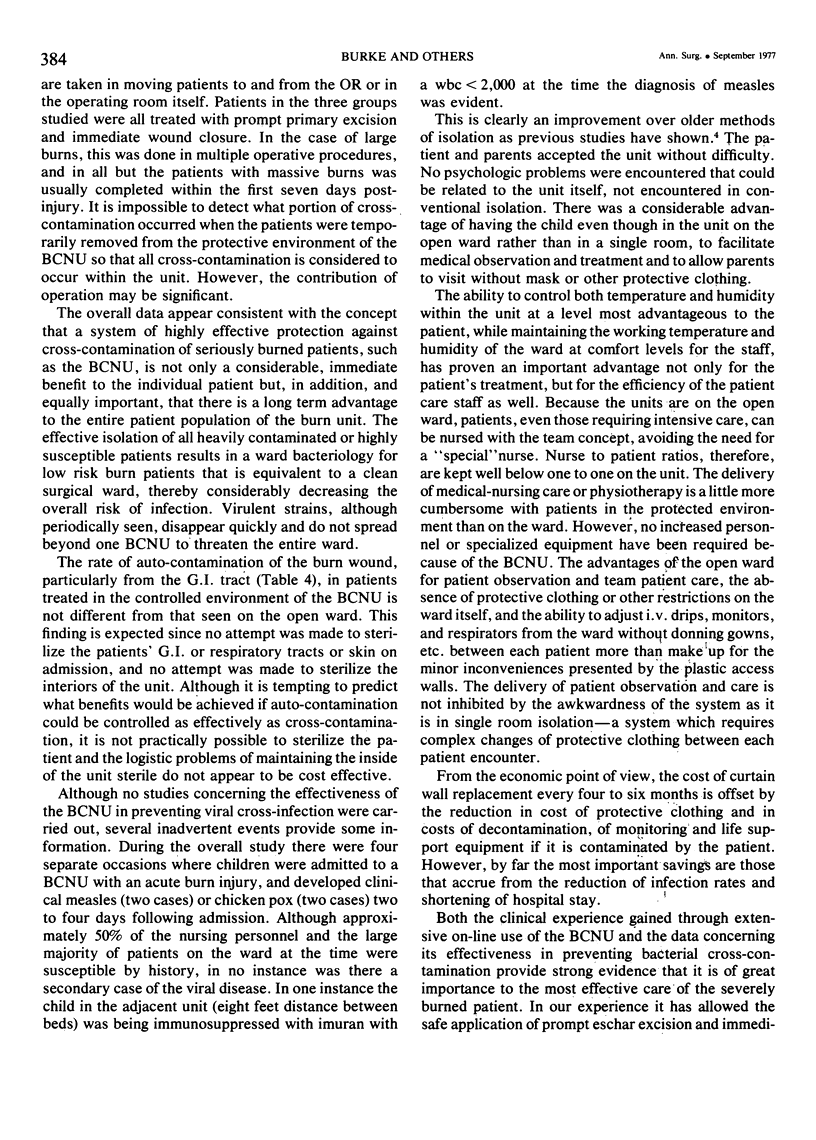
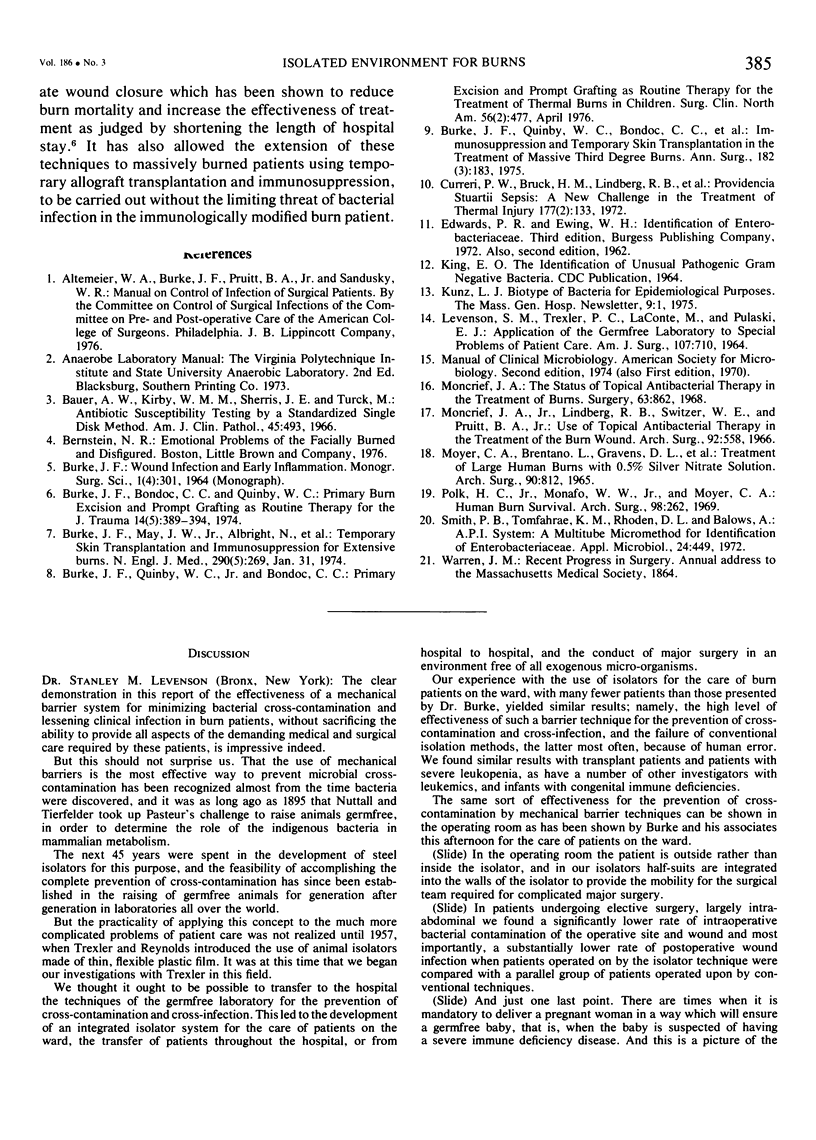
Selected References
These references are in PubMed. This may not be the complete list of references from this article.
- Bauer A. W., Kirby W. M., Sherris J. C., Turck M. Antibiotic susceptibility testing by a standardized single disk method. Am J Clin Pathol. 1966 Apr;45(4):493–496. [PubMed] [Google Scholar]
- Burke J. F., Bondoc C. C., Quinby W. C. Primary burn excision and immediate grafting: a method shortening illness. J Trauma. 1974 May;14(5):389–395. doi: 10.1097/00005373-197405000-00005. [DOI] [PubMed] [Google Scholar]
- Burke J. F., May J. W., Jr, Albright N., Quinby W. C., Russell P. S. Temporary skin transplantation and immunosuppression for extensive burns. N Engl J Med. 1974 Jan 31;290(5):269–271. doi: 10.1056/NEJM197401312900509. [DOI] [PubMed] [Google Scholar]
- Burke J. F., Quinby W. C., Bondoc C. C., Cosimi A. B., Russell P. S., Szyfelbein S. K. Immunosuppression and temporary skin transplantation in the treatment of massive third degree burns. Ann Surg. 1975 Sep;182(3):183–197. doi: 10.1097/00000658-197509000-00002. [DOI] [PMC free article] [PubMed] [Google Scholar]
- Burke J. F., Quinby W. C., Jr, Bondoc C. C. Primary excision and prompt grafting as routine therapy for the treatment of thermal burns in children. Surg Clin North Am. 1976 Apr;56(2):477–494. doi: 10.1016/s0039-6109(16)40890-x. [DOI] [PubMed] [Google Scholar]
- Curreri P. W., Bruck H. M., Lindberg R. B., Mason A. D., Jr, Pruitt B. A., Jr Providencia stuartii sepsis: a new challenge in the treatment of thermal injury. Ann Surg. 1973 Feb;177(2):133–138. doi: 10.1097/00000658-197302000-00001. [DOI] [PMC free article] [PubMed] [Google Scholar]
- LEVENSON S. M., TREXLER P. C., LACONTE M., PULASKI E. J. APPLICATION OF THE TECHNOLOGY OF THE GERMFREE LABORATORY TO SPECIAL PROBLEMS OF PATIENT CARE. Am J Surg. 1964 May;107:710–722. doi: 10.1016/0002-9610(64)90298-3. [DOI] [PubMed] [Google Scholar]
- MOYER C. A., BRENTANO L., GRAVENS D. L., MARGRAF H. W., MONAFO W. W., Jr TREATMENT OF LARGE HUMAN BURNS WITH 0.5 PER CENT SILVER NITRATE SOLUTION. Arch Surg. 1965 Jun;90:812–867. doi: 10.1001/archsurg.1965.01320120014002. [DOI] [PubMed] [Google Scholar]
- Moncrief J. A., Lindberg R. B., Switzer W. E., Pruitt B. A., Jr Use of topical antibacterial therapy in the treatment of the burn wound. Arch Surg. 1966 Apr;92(4):558–565. doi: 10.1001/archsurg.1966.01320220114019. [DOI] [PubMed] [Google Scholar]
- Moncrief J. A. The status of topical antibacterial therapy in the treatment of burns. Surgery. 1968 May;63(5):862–867. [PubMed] [Google Scholar]
- Polk H. C., Jr, Monafo W. W., Jr, Moyer C. A. Human burn survival. Study of efficacy of 0.5 percent aqueous silver nitrate. Arch Surg. 1969 Mar;98(3):262–265. doi: 10.1001/archsurg.1969.01340090038002. [DOI] [PubMed] [Google Scholar]
- Smith P. B., Tomfohrde K. M., Rhoden D. L., Balows A. API system: a multitube micromethod for identification of Enterobacteriaceae. Appl Microbiol. 1972 Sep;24(3):449–452. doi: 10.1128/am.24.3.449-452.1972. [DOI] [PMC free article] [PubMed] [Google Scholar]


